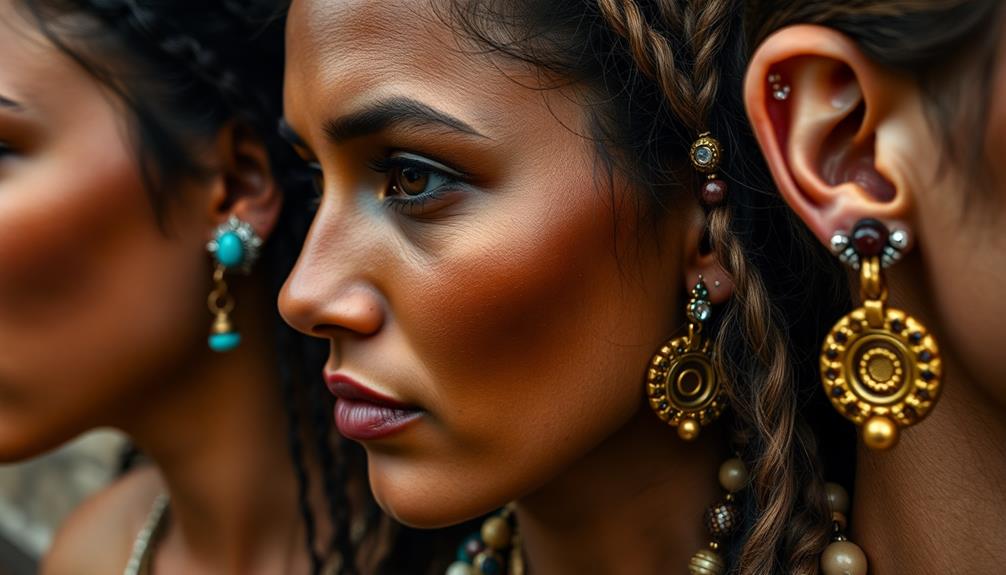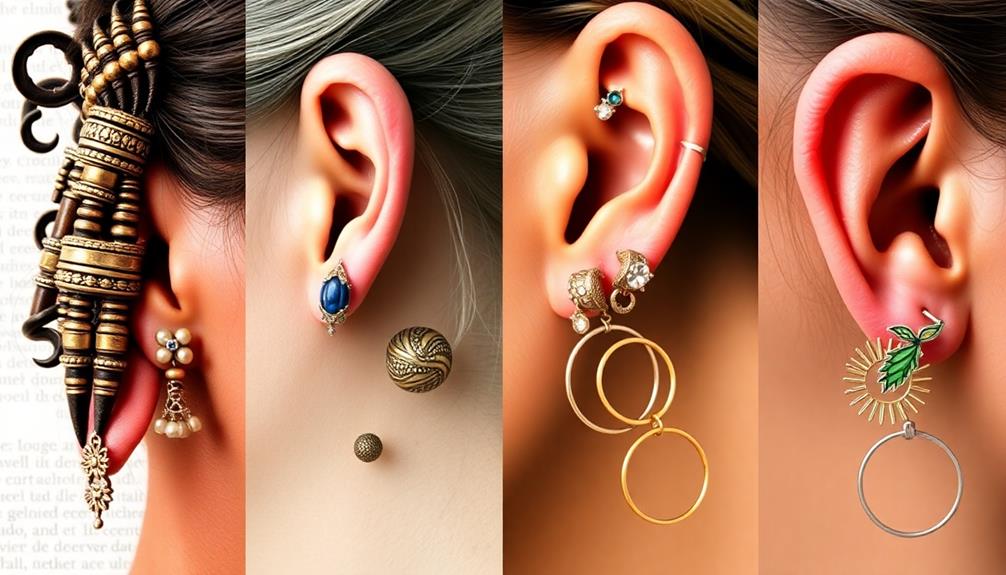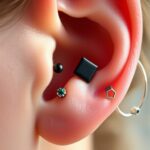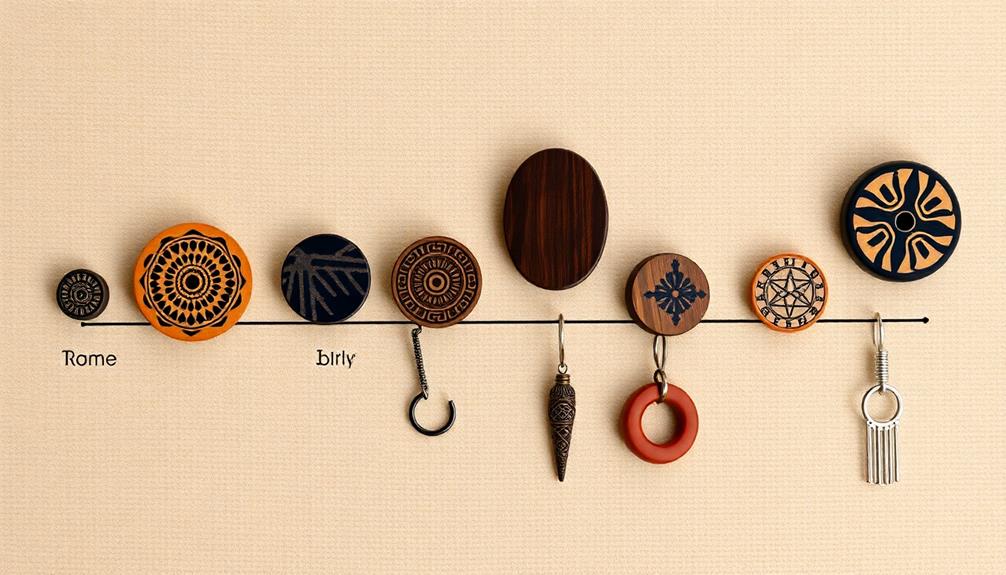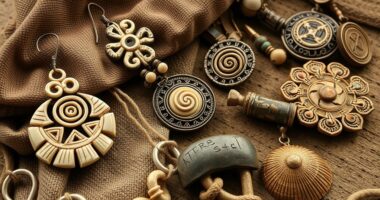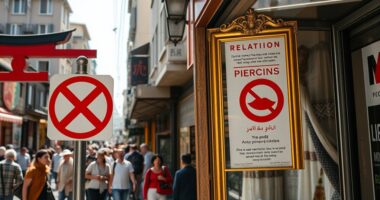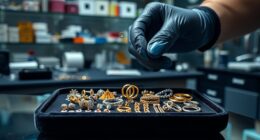Modern tribal piercings can spark debate over whether they're acts of cultural appropriation or genuine appreciation. While you might see them as a form of self-expression, it's essential to understand their deeper meanings rooted in various cultures. Many tribal piercings symbolize identity, status, and spirituality, and using them without context can disrespect their significance. Engaging thoughtfully with these practices promotes appreciation rather than exploitation. To fully appreciate these unique expressions, you should research their origins and meanings, which can enhance your understanding and respect for diverse cultural traditions. Keep exploring to uncover more insights!
Key Takeaways
- Modern tribal piercings can symbolize personal expression, but understanding their cultural significance is essential to avoid appropriation.
- Cultural appreciation involves recognizing and respecting the origins and meanings behind traditional piercing practices, fostering genuine understanding.
- Engaging with the communities that practice these traditions promotes mutual respect and helps combat cultural appropriation.
- Misuse of tribal piercings for fashion trends can trivialize their sacred meanings, leading to disrespect and misunderstanding.
- Open dialogue and education about the cultural roots of piercings can bridge gaps and promote appreciation over appropriation.
Cultural Significance of Piercings
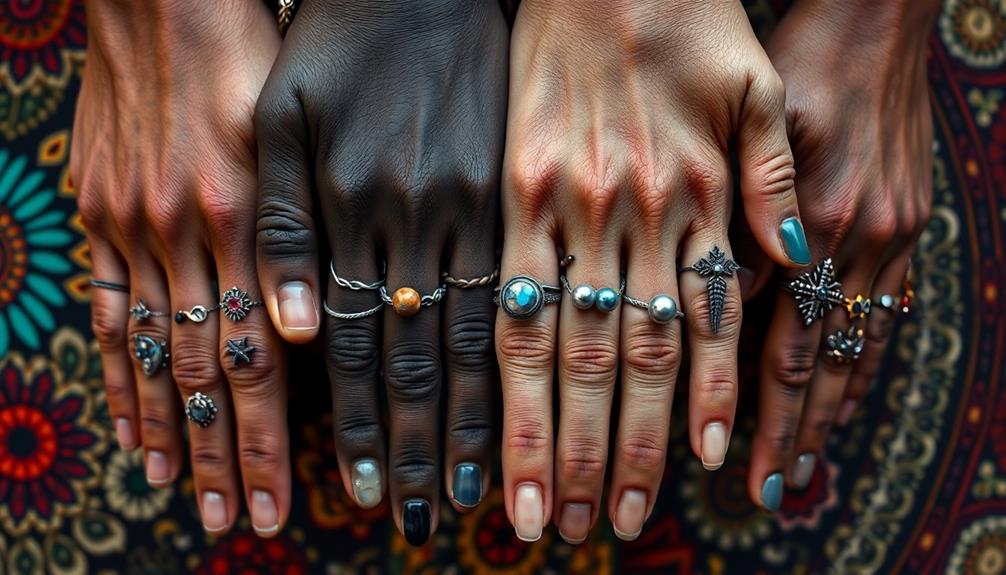
Piercings have long played a crucial role in human culture, often symbolizing identity, status, and spirituality. Across various societies, piercings carry deep cultural significance that reflects traditional practices and communal beliefs. For example, the Mursi Tribe in Africa uses lip plates to signify social status and beauty, while in India, nose piercings, or nath, are tied to marital status and fertility.
These customs illustrate how body modification can serve as a powerful expression of cultural identity.
As you explore modern interpretations of piercings, it's important to reflect on cultural appreciation versus cultural appropriation. Engaging with traditional practices without understanding their meanings can lead to the commodification of sacred symbols. Many contemporary piercings draw from these rich histories, blending traditional significance with personal style.
However, it's crucial to approach such practices with respect and awareness of their origins.
You might find that appreciating these cultural meanings enhances your own experience with body modification. By acknowledging the history behind piercings, you can foster a deeper connection to the art form while honoring the diverse cultures that have shaped its significance.
Traditional African Piercing Practices
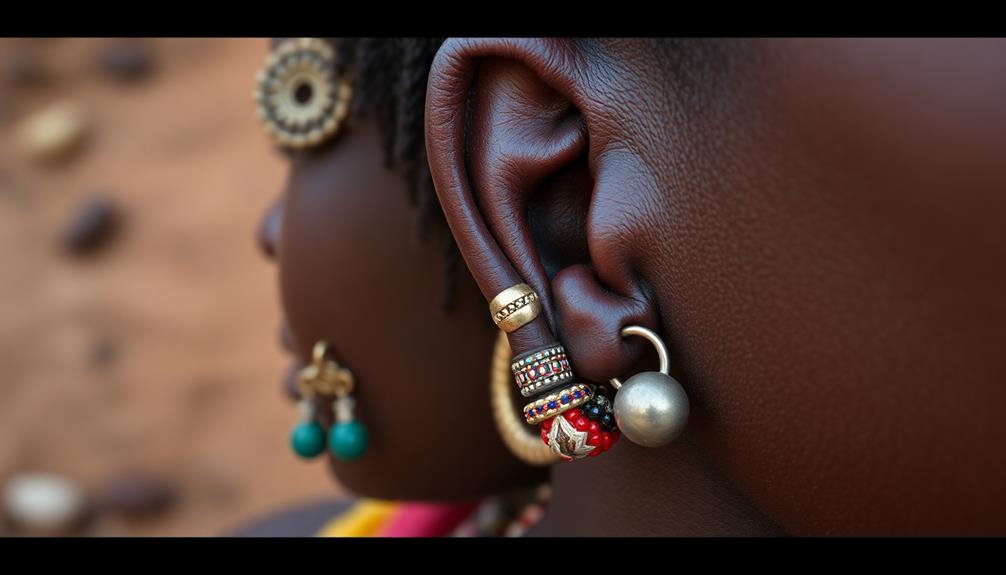
Throughout history, traditional African piercing practices have served as essential expressions of identity and social structure within various communities. These practices often carry deep cultural significance behind them, marking important life events and social statuses.
For instance, in the Mursi tribe of Ethiopia, women wear clay or wooden lip plates, where the size reflects beauty and social standing, symbolizing a rite of passage into adulthood.
Similarly, the Maasai people of Kenya and Tanzania engage in ear stretching, gradually enlarging earlobes with heavy jewelry to signify age, wisdom, and social hierarchy.
The Himba tribe of Namibia also emphasizes body modifications, with women adorning intricate piercings and jewelry that express cultural identity and social roles.
In cultures such as the Berbers of North Africa, nose and lip piercings showcase tribal heritage, reinforcing individual and group identity.
Many traditional African piercing practices also have spiritual meanings, providing protection against evil spirits or connecting individuals to the divine.
Understanding these practices requires cultural sensitivity and respect, as they reveal the rich tapestry of beliefs and values embedded in African societies.
Asian Piercing Traditions Explored
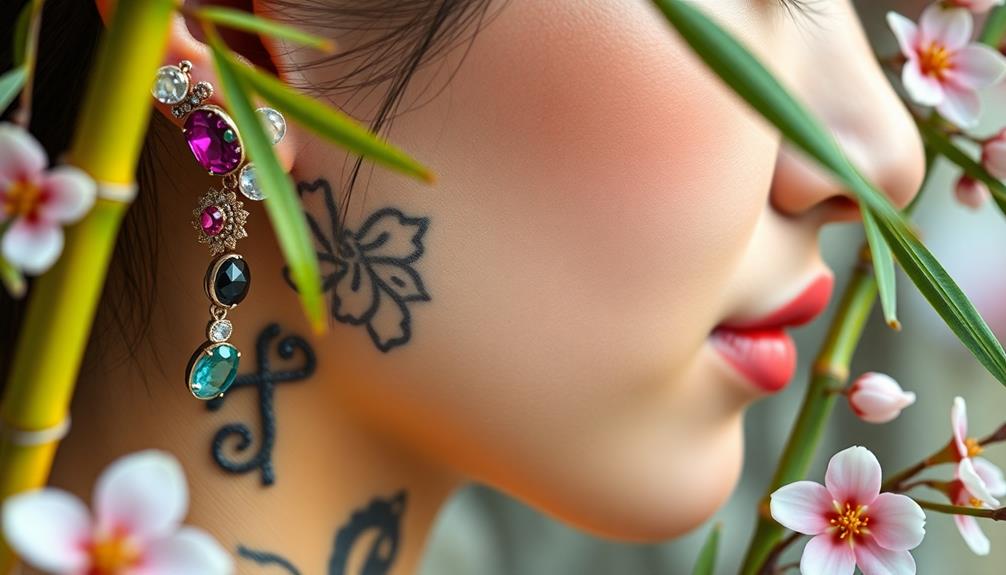
Asian piercing traditions are rich with cultural significance, especially when it comes to nose piercings, like the nath in India.
These practices not only reflect beauty but also carry deep symbolism related to marital status and fertility.
As you explore the contrast between traditional and modern approaches, you'll uncover how these age-old customs continue to influence contemporary body art.
Cultural Relevance of Nose Piercings
In many cultures across Asia, nose piercings carry profound significance that transcends mere fashion. They're woven into the fabric of cultural practices, embodying centuries of traditions and historical context.
For instance, in India, the left nostril piercing is often tied to reproductive health, rooted in Ayurvedic beliefs aimed at enhancing fertility. Additionally, the nath, or nose ring, is integral to bridal adornment, symbolizing both marital status and cultural identity during weddings.
Here are some key aspects of nose piercings' cultural relevance:
- Spiritual Significance: In various Asian cultures, nose piercings are believed to ward off evil spirits and attract good fortune.
- Historical Roots: Evidence from ancient texts and sculptures highlights the longstanding importance of nose piercings in South Asian traditions.
- Cultural Appreciation: While they've evolved into modern fashion statements, their cultural significance remains strong.
- Symbol of Identity: Nose piercings often reflect personal and cultural identity, connecting individuals to their heritage.
Understanding these layers of meaning fosters a deeper appreciation for the intricate role nose piercings play in Asian cultures.
Traditional vs. Modern Practices
Nose piercings and other body modifications showcase a fascinating interplay between tradition and modernity in various cultures. In India, for example, nose piercings hold deep cultural significance, often symbolizing marital status and fertility, especially when worn during weddings.
Similarly, traditional Chinese ear piercings align with health practices rooted in acupuncture, highlighting the historical importance of these modifications. Understanding the financial implications of care can also be fundamental for families involved in cultural practices that require additional resources.
In South Asian cultures, the left nostril piercing carries a unique significance, linked to reproductive health and a woman's identity. Traditional practices like these emphasize the genuine desire to connect with cultural traditions that span generations.
Yet, modern piercing practices have evolved, merging with contemporary fashion trends while still honoring their roots. The gradual stretching of earlobes in certain Asian cultures continues to embody wisdom and social status, transcending mere aesthetics.
However, this blending raises questions about cultural appropriation; are modern enthusiasts appreciating these traditions or merely adopting them without understanding their depth? As styles change, it's vital to navigate this dynamic landscape thoughtfully, ensuring that the rich history behind these practices is respected and preserved.
Symbolism in Asian Cultures
Body modifications like piercings often carry deep-rooted symbolism across various Asian cultures, reflecting personal identity, social status, and spiritual beliefs. Understanding these significances can help you appreciate the rich traditions behind these practices.
- In India, a nose piercing, especially in the left nostril, signifies marital status and is believed to enhance reproductive health.
- The nath (nose ring) is an essential part of bridal adornment in South Asian cultures, showcasing cultural heritage during weddings.
- In China, ear piercings connect to traditional medicine, aligning with acupuncture points to promote health and well-being.
- Nose piercings often mark rites of passage, embodying identity and spirituality within diverse communities.
Recognizing these cultural meanings can enhance your appreciation for piercings beyond mere fashion statements.
As you explore the evolution of body adornment practices in Asian cultures, you'll notice how contemporary designs, like floral motifs, merge traditional aesthetics with modern trends.
This blend not only honors the past but also highlights the ongoing significance of piercings in expressing personal identity.
Ultimately, understanding these cultural contexts fosters a deeper respect for the traditions and values they represent.
Indigenous Piercing Customs
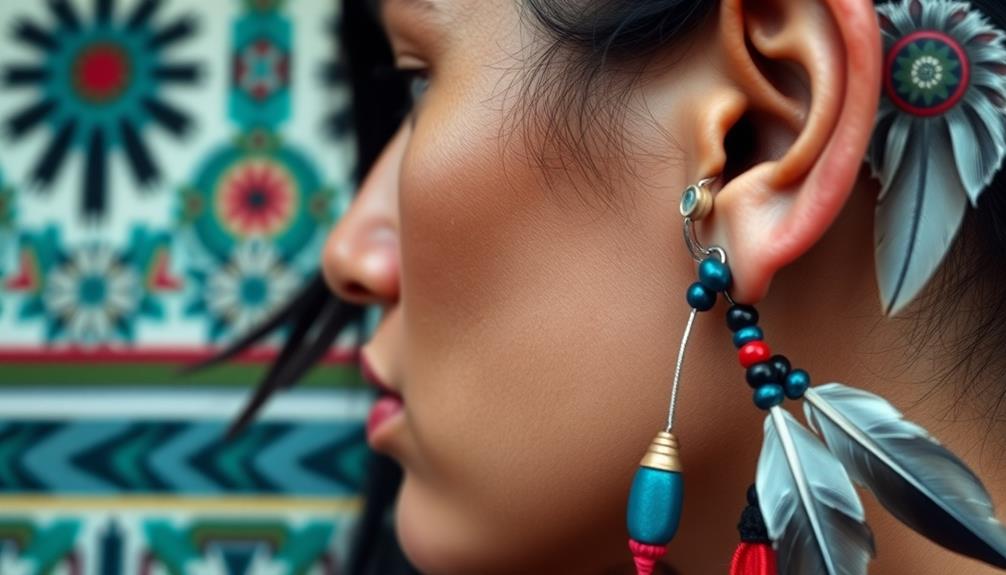
Throughout history, various Indigenous cultures have embraced piercing customs that go far beyond mere adornment. These practices often hold deep cultural significance, serving as rites of passage that mark changes within the community. For instance, the Inuit labret piercing is believed to enhance spiritual and physical abilities for both genders. Similarly, the Aztecs adorned themselves with ornate septum piercings made from gold and jade, symbolizing strength and a divine connection, especially among warriors.
Here's a glimpse into some piercing customs across different indigenous cultures:
| Indigenous Culture | Piercing Custom & Significance |
|---|---|
| Inuit | Labret piercing enhances spiritual and physical abilities. |
| Aztec | Septum piercing symbolizes strength and divine connection. |
| Maasai | Ear stretching signifies age, wisdom, and social status. |
| Mursi | Lip plates represent beauty and social standing. |
| North American Tribes | Body piercings as part of initiation ceremonies. |
These practices exemplify how body art plays an essential role in cultural exchange and identity, reflecting values and beliefs unique to each indigenous culture.
Modern Interpretations of Piercings
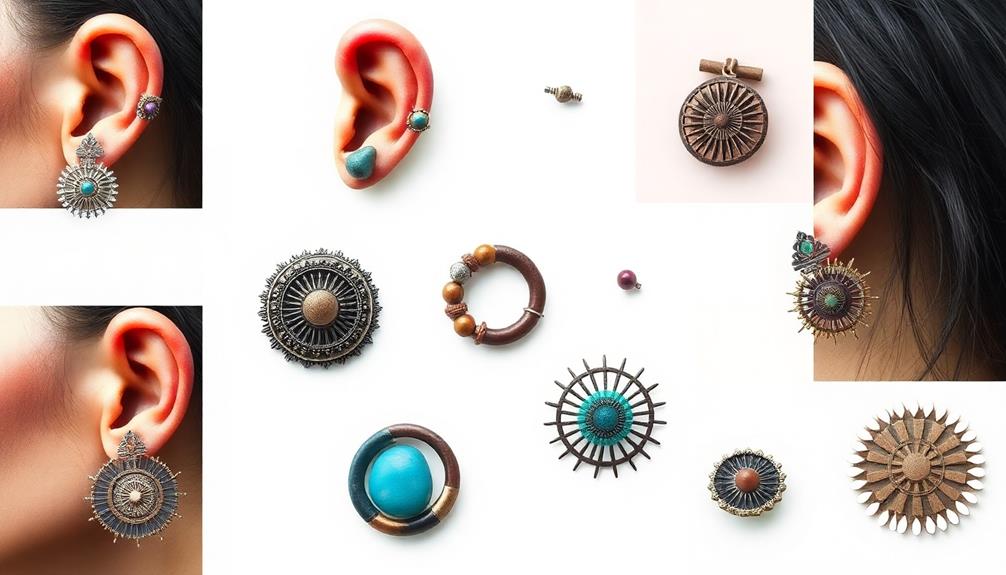
Blending traditional designs with contemporary aesthetics, modern interpretations of piercings have evolved into vibrant expressions of personal identity. You might notice styles like flower nose piercings that merge cultural symbolism with personal expression.
As the popularity of body modifications grows, many see piercings as a way to showcase individuality rather than just cultural significance. This trend reflects a broader societal movement towards embracing diverse identities, similar to how individuals with BPD often experience intense emotional responses that shape their self-image.
Consider these aspects when exploring modern piercings:
- The shift towards self-identity through personal expression.
- The blending of ancient traditions with modern fashion trends.
- The importance of understanding the deeper meanings behind traditional designs.
- The role of cultural sensitivity in today's piercing practices.
While it's exciting to see these modern interpretations flourish, it's essential to acknowledge the potential for cultural appropriation.
Being aware of the origins and significance of your chosen piercings can enhance your appreciation for their history. Many contemporary piercers prioritize education, ensuring you're informed about the traditions you're engaging with.
Understanding Cultural Appropriation
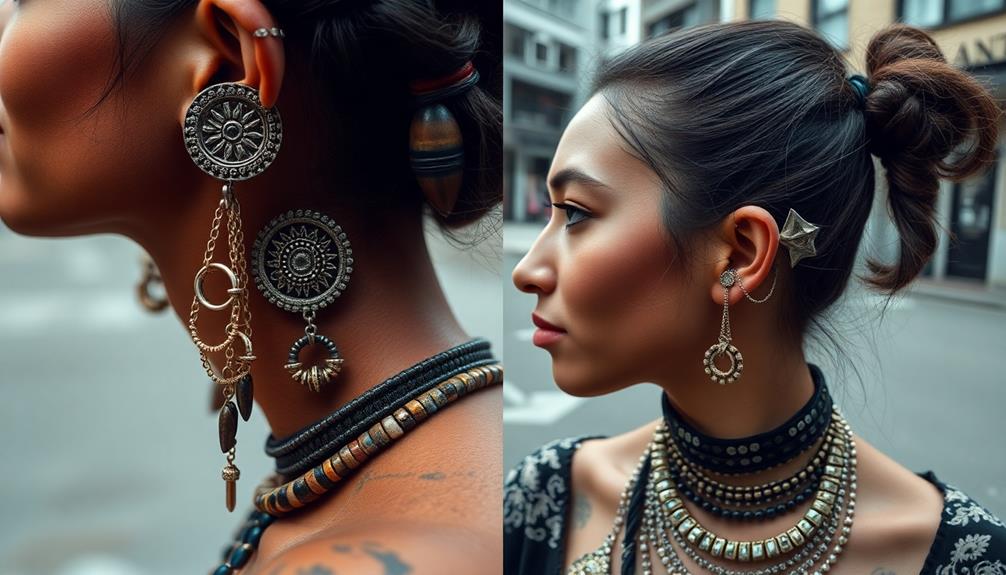
Cultural appropriation is a complex and often contentious topic that highlights the fine line between appreciation and exploitation. When you engage with elements from a minority culture, it's vital to understand the significance behind them. Without this understanding, you might inadvertently perpetuate harmful stereotypes or undermine the identity of that culture.
Here's a quick comparison to help you grasp the key differences:
| Cultural Sensitivity | Cultural Appropriation |
|---|---|
| Acknowledges the history and meaning of cultural elements. | Ignores context, focusing only on aesthetics. |
| Encourages mutual respect and appreciation. | Exploits cultural symbols for personal gain. |
| Fosters dialogue and understanding among cultures. | Reinforces power imbalances, causing harm to marginalized communities. |
As you navigate this complex landscape, remember that showing respect for the cultural practices and values of others is essential. Recognizing the significance of what you adopt not only fosters appreciation but also safeguards against exploitation. Engaging thoughtfully with cultural elements can help you build bridges of understanding and respect among diverse cultures.
Notable Controversies in Piercing
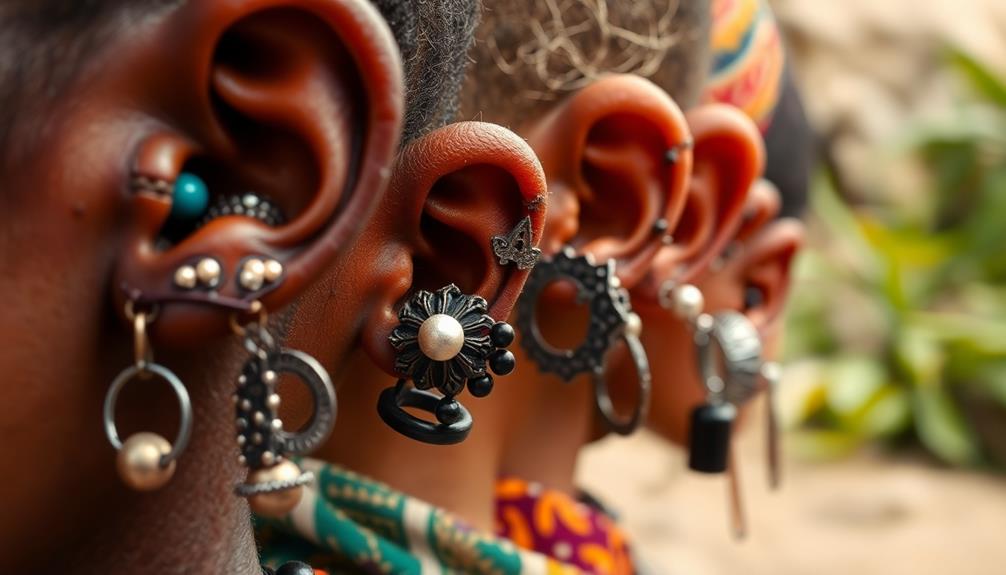
Notable controversies surrounding modern piercings often emerge from misunderstandings about their cultural significance.
For instance, when Kim Kardashian allowed her daughter North West to wear nose rings, many criticized her for trivializing the rich history and cultural sensitivity surrounding this practice in various communities.
Similarly, Zac Efron faced backlash for donning dreadlocks, which many viewed as cultural appropriation without acknowledging the historical context tied to Black culture.
Here are some notable examples:
- Kylie Jenner's use of cornrows in a music video sparked debates about respect for Black hairstyles.
- Sarah Jessica Parker was criticized for mislabeling a lehenga as a sari, showing a lack of understanding of distinct cultural garments.
- Selena Gomez and Vanessa Hudgens received backlash for wearing bindis at Coachella, as it demonstrated a lack of respect for its significance in South Asian cultures.
These instances illustrate the importance of honoring the cultural significance of body adornments while traversing the complexities of cultural appropriation.
Engaging with various cultures requires an awareness of their unique histories and practices to foster appreciation rather than appropriation.
Guidelines for Respectful Engagement
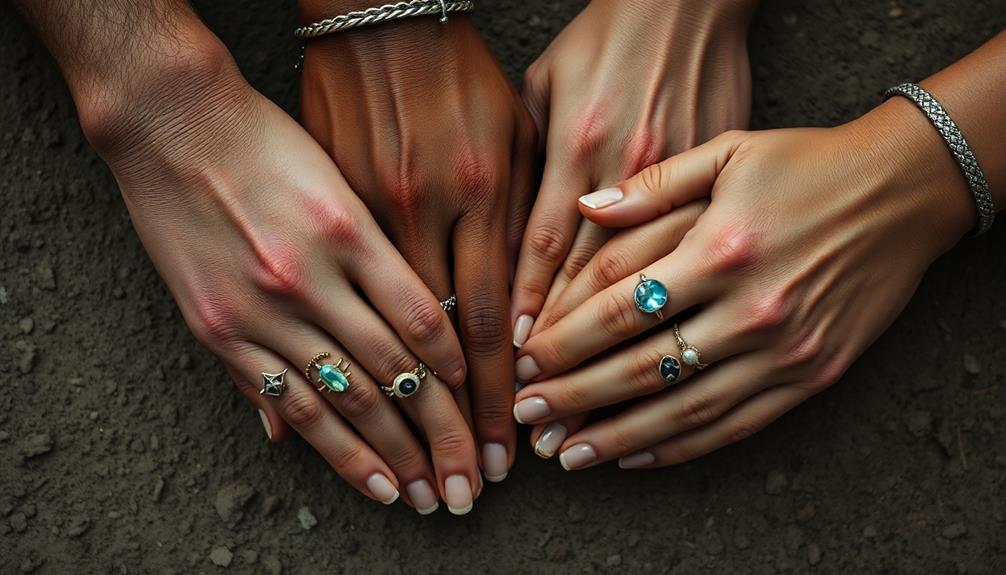
When you consider adopting tribal piercings, it's essential to research their cultural significance and origins.
Understanding where these traditions come from not only enriches your experience but also shows respect to the source culture.
Remember to acknowledge and credit these origins in your personal style to foster genuine appreciation.
Research Cultural Significance
Understanding the cultural significance of piercings starts with thorough research into their historical contexts. Many piercings, like nose rings, possess deep meanings tied to identity, spirituality, and social status in various cultures.
When you engage with these traditions, it's crucial to recognize their original meanings and practices to avoid cultural appropriation and disrespect. Awareness of narcissistic behavior can also be important when reflecting on how personal motivations might influence cultural engagement.
Here are some key points to ponder for respectful engagement:
- Reflect on your intentions: Are you appreciating the culture or simply seeking a trend?
- Acknowledge the origins: Confirm you understand the significance behind the piercing practices.
- Embrace cultural sensitivity: Avoid trivializing sacred symbols and traditions.
- Participate in conversations: Engage with communities to honor their practices and learn from them.
Acknowledge Original Sources
To truly honor the origins of tribal piercings, it's essential to dig into their cultural significance and historical context. Start by researching the piercing practice that interests you, ensuring you respect their cultural roots.
Acknowledge and credit the original culture, highlighting its importance and meaning. This recognition not only honors the significance of the practice but also helps combat cultural appropriation.
Avoid trivializing culturally significant symbols or practices, as this can perpetuate stereotypes and diminish their value. Instead, take a moment to reflect on your intentions when adopting these elements.
Make sure your motivations stem from genuine appreciation rather than trend-following or commodification.
Engage with individuals from the culture you're drawing inspiration from. This fosters a respectful dialogue and allows for a deeper appreciation of their traditions and practices.
Listen to their stories and insights, as this engagement enriches your understanding and respect for the cultural significance of tribal piercings.
Promoting Cultural Appreciation
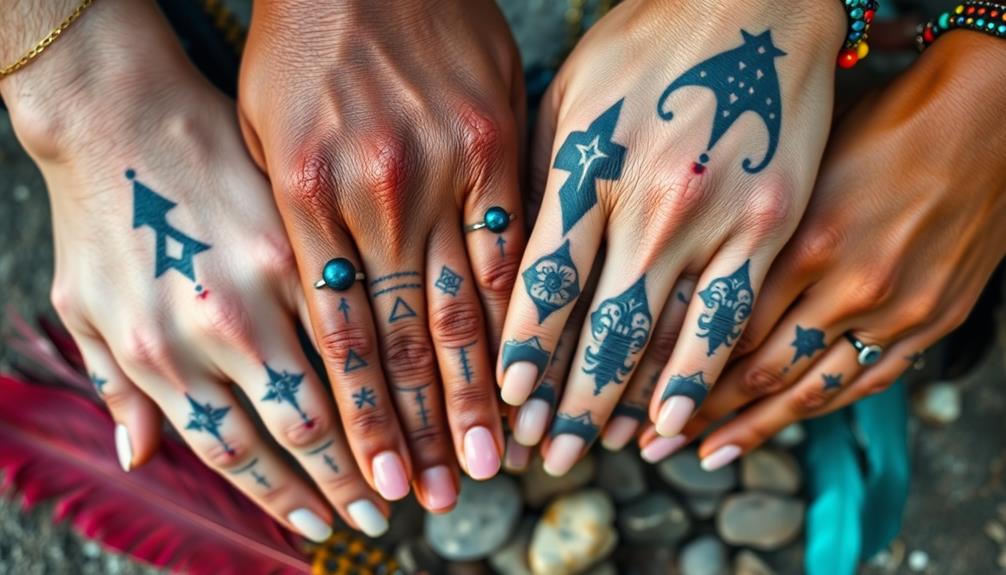
Cultural appreciation thrives on a foundation of respect and understanding, especially when it comes to the rich history of tribal piercings. To genuinely honor the cultural significance of these practices, it's crucial to explore their origins and meanings. By doing so, you promote cultural appreciation rather than appropriating these sacred symbols.
Here are some ways to foster this appreciation:
- Engage in respectful learning about the cultural and religious significance of different piercings.
- Attend traditional ceremonies or events to understand their importance within the culture.
- Support artisans who create traditional jewelry, showing appreciation for their craft and heritage.
- Encourage open dialogues about the meanings behind various piercings to enhance awareness and respect.
Recognizing that piercings hold deep meanings—like nose piercings symbolizing marital status in South Asian cultures or lip plates signifying beauty among Mursi women—can deepen your respect for these traditions.
Frequently Asked Questions
Are Tribal Style Tattoos Cultural Appropriation?
Yes, tribal style tattoos can be seen as cultural appropriation if you use them without understanding their significance. It's essential to research their meanings and respect the cultures they originate from to avoid disrespect.
What Is Modern Cultural Appropriation Examples?
When you observe modern cultural appropriation, think about celebrities adopting hairstyles or clothing from marginalized cultures without understanding their significance. These actions often exploit traditions, trivializing deep meanings while profiting from them, causing cultural insensitivity.
Is Getting Your Nose Pierced Cultural Appropriation?
Getting your nose pierced isn't inherently cultural appropriation, but it depends on your understanding of its significance. Respecting its cultural roots and acknowledging its history is essential if you choose to get one.
What Is the Difference Between Native American Appropriation and Appreciation?
You need to recognize that appropriation involves adopting Native elements without respect or understanding, while appreciation means honoring and acknowledging their significance. Genuine appreciation fosters respect, unlike appropriation, which often erases cultural identities and meanings.
Conclusion
As you navigate the colorful tapestry of modern piercings, remember to tread thoughtfully. Picture a vibrant marketplace filled with rich traditions, where each piercing tells a story steeped in heritage. Embrace the beauty of these practices, but do so with respect and awareness. By honoring their origins, you can transform your fascination into genuine appreciation, weaving a connection that celebrates culture rather than appropriating it. Let your choices reflect understanding, creating a harmonious blend of art and respect.

